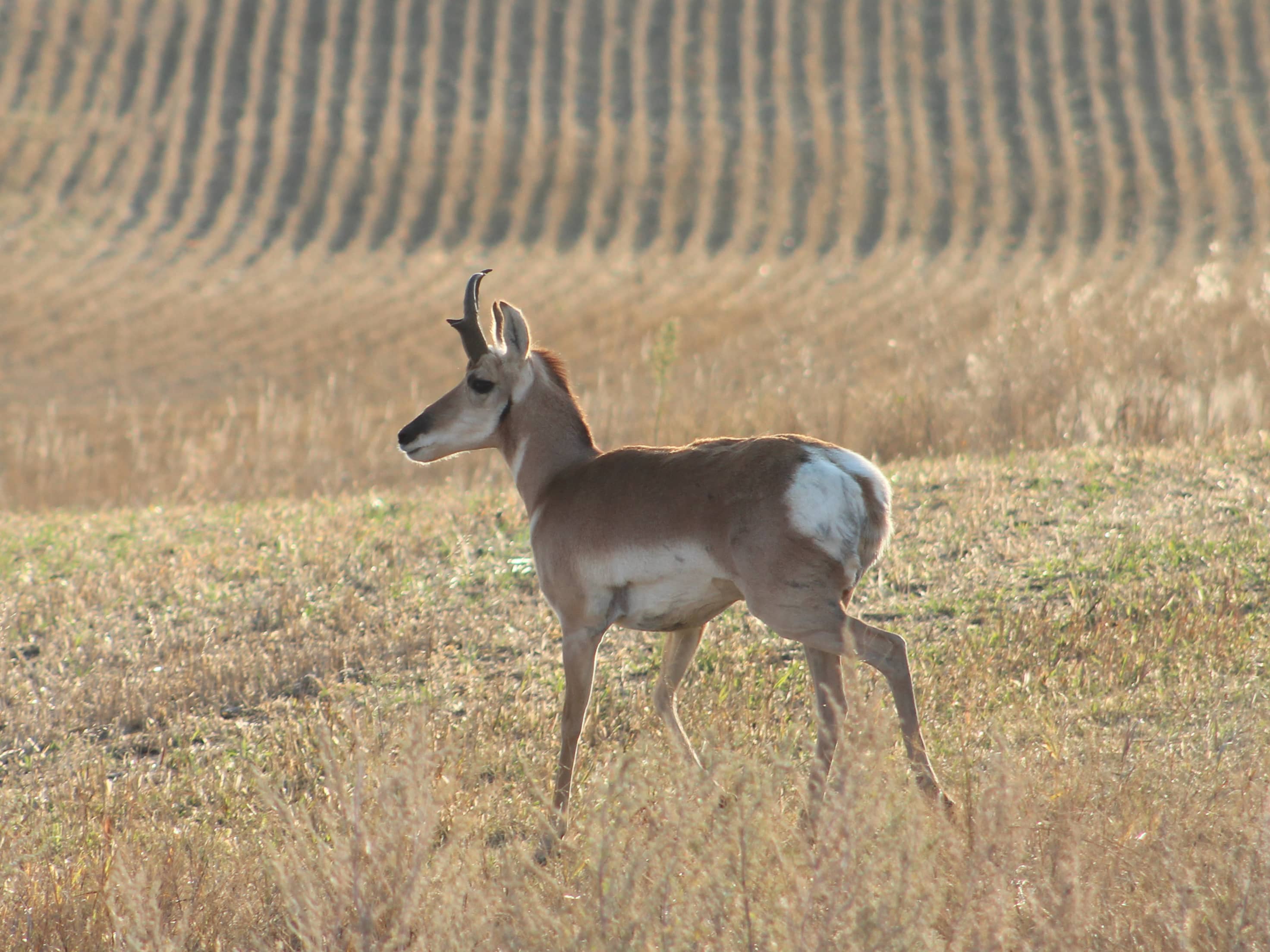
Pronghorn herds, recently hit by poor fawning conditions, lack of forage and increasingly fenced territory, likely fared the worst of all of ND’s big game species following last weekend’s massive blizzard which dumped up to three feet of snow in some areas. Simonson Photo.
By Nick Simonson
While a new socking of snow looms on the horizon for western North Dakota this weekend, it’s likely that last week’s blizzard which dropped 15, 20 and in some places more than 30 inches of snow throughout had limited impact on most big game species in the region.
According to Brett Wiedmann, Big Game Biologist with the North Dakota Game & Fish Department (NDG&F) the timing of the snow event coinciding with spring likely lessened its impact on the region’s mule deer and white-tailed deer herds.
Minor Impacts on Deer
“The silver lining is we had a very mild winter up to this point [in western North Dakota], so as far as body condition, I guess that would have helped out quite a bit. It goes with any event, where the old and the young are going to be most impacted by a storm like this. Certainly, fawns are susceptible, even laying down and getting buried under snow drifts, and of course older animals – older does, older bucks – succumbing as well. But it is a short-lived event and I don’t think it’s going to be a catastrophic event, but I’m sure we lost a few deer out there,” Wiedmann reveals.
Due to the short time frame and the melting and warmup which followed, Wiedmann doesn’t predict that the stress would impact the upcoming fawning season and surviving does of each deer type would likely be able to continue to carry their offspring and produce healthy young this spring. Typically, deer give birth to their fawns in late May in North Dakota.
Likely No Hit to Bigger Animals
When it comes to the state’s populations of moose, elk and bighorn sheep, the recent heavy snow likely had no impact on the health of those herds, as being larger animals, they are typically stronger and more adapted to deal with adverse conditions.
Wiedmann noted through the GPS collars on a sampling of the state’s bighorns that they weathered the storm well, as the 50 or so reports generated on his computer from those tracking devices showed the animals hunkering down and stationary during the brunt of the storm, and then all moving several miles shortly after it passed. Bighorn sheep in North Dakota tend to drop their lambs at the beginning of May, so while the event was closer to their reproductive window, it probably will not hurt their herds. Likewise, moose and elk probably took the storm in stride, as both species are conditioned to deal with adverse temperatures and can better navigate deeper snow.
“If moose are dying from winter, everything else is probably long gone as well. They’re such a large ungulate, big-bodied. This would have had just no impact,” Wiedmann relates, adding that for elk, deaths from such an event are rare, “we did see from this November blizzard – I think it was about five years ago – we were surprised to see some areas in the badlands where we were flying mule deer surveys we did see some dead elk down there. They actually did die in that storm out there but basically, they got trapped by the snow and couldn’t get out to flatter country.”
Precarious for Pronghorn
Coming out of 2021, where conditions conspired against the state’s pronghorn populations, Wiedmann is not as optimistic for their herds following the event. Last spring’s dry conditions resulted in limited ground cover, which thwarted fawning efforts for pronghorn in western North Dakota, leaving their young exposed and susceptible to predation by coyotes and other animals. Dry conditions also limited their forage going into winter, and even with the moisture resulting from the recent weather event, there is little standing cover from the previous season. The storm did produce anecdotal reports to NDG&F agents in the days following that some pronghorn did indeed die from their exposure to the elements.
This weekend’s forecast for the western tier of North Dakota shows a steep gradient with anywhere from four inches of snow in Bismarck, to more than another foot of snow near Williston, with greater totals expected north and west of a transition zone between a warm air mass to the east and a colder area to the west.
The eastern portion of the state is likely to see elevated temperatures, and as a result, mostly rain for precipitation this weekend.
